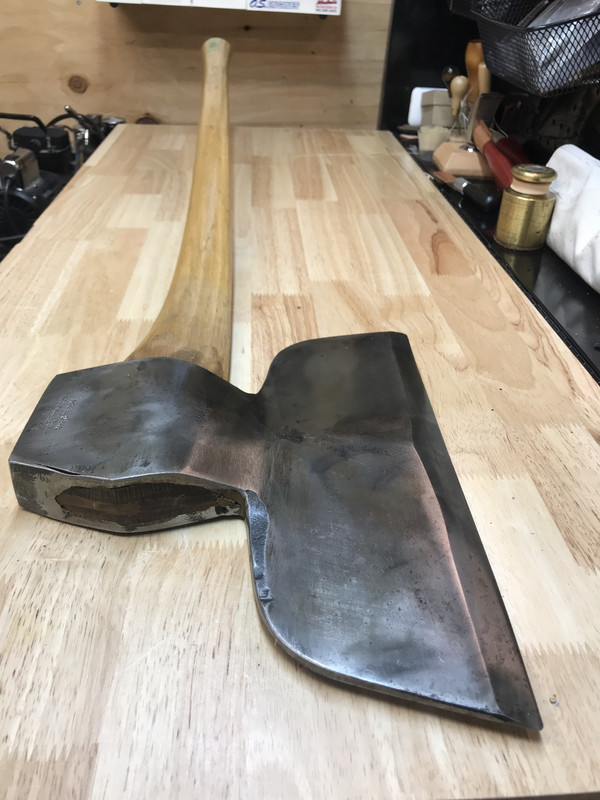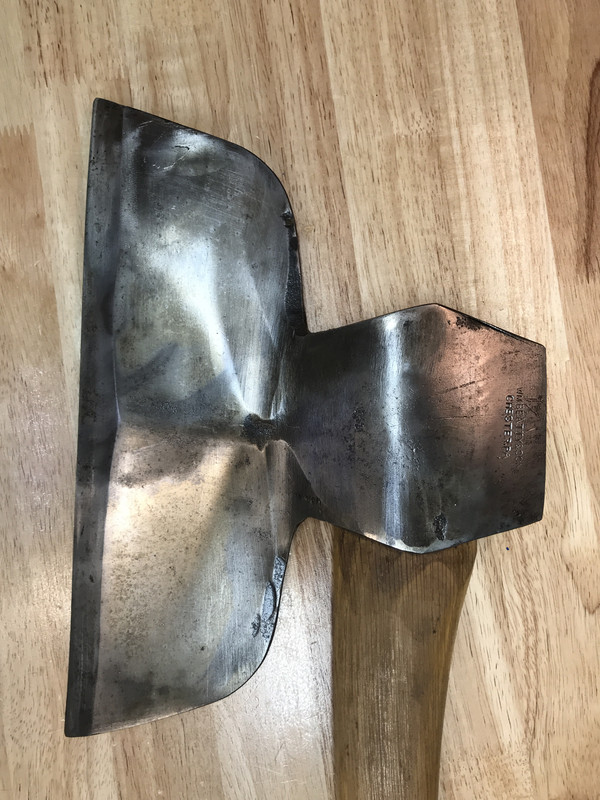- Joined
- Jul 31, 2017
- Messages
- 1,470
In early XX century hardware stores used to sell broad axes with long 32-36 inch handles.
https://books.google.com/books?id=v...=PA49#v=onepage&q=pittsburgh broad axe&f=true
Long handles would require to work the sides of the log standing on the top. I am curious about that technique ... Maybe it was the influence of thousands of Chinese workers building Transcontinental Railroad hewing railroad ties using Japanese technique?

https://archive.org/details/SearsRoebuckAndCoHardwareCatalog1919/page/n49
To my surprise, I have seen quit a lot of broad axes mounted on long handles with signs of regular use.

https://www.worthpoint.com/worthopedia/superb-dr-barton-12-timber-framers-142865628

https://www.worthpoint.com/worthopedia/antique-marked-original-kelly-broad-axe

https://www.worthpoint.com/worthopedia/antique-vintage-primitive-hand-forged-150283570

https://www.worthpoint.com/worthopedia/canadian-pattern-fulton-broad-axe-1843065948
https://books.google.com/books?id=v...=PA49#v=onepage&q=pittsburgh broad axe&f=true
Long handles would require to work the sides of the log standing on the top. I am curious about that technique ... Maybe it was the influence of thousands of Chinese workers building Transcontinental Railroad hewing railroad ties using Japanese technique?
https://archive.org/details/SearsRoebuckAndCoHardwareCatalog1919/page/n49
To my surprise, I have seen quit a lot of broad axes mounted on long handles with signs of regular use.

https://www.worthpoint.com/worthopedia/superb-dr-barton-12-timber-framers-142865628

https://www.worthpoint.com/worthopedia/antique-marked-original-kelly-broad-axe

https://www.worthpoint.com/worthopedia/antique-vintage-primitive-hand-forged-150283570

https://www.worthpoint.com/worthopedia/canadian-pattern-fulton-broad-axe-1843065948
Last edited:





